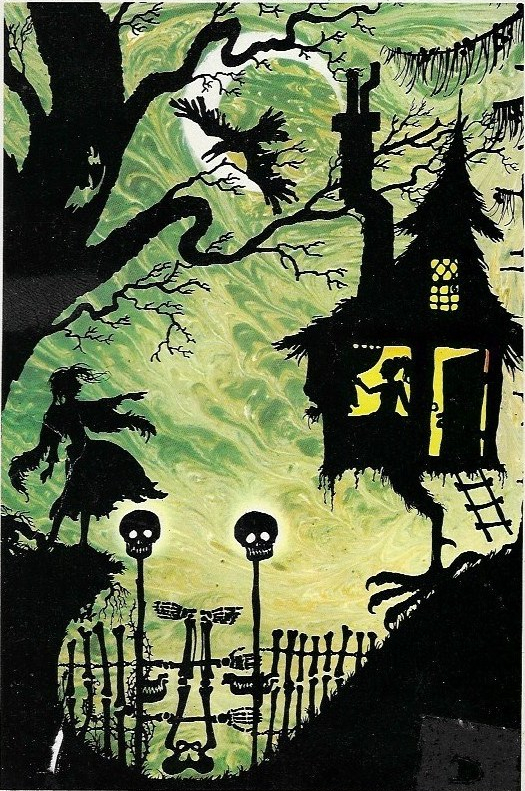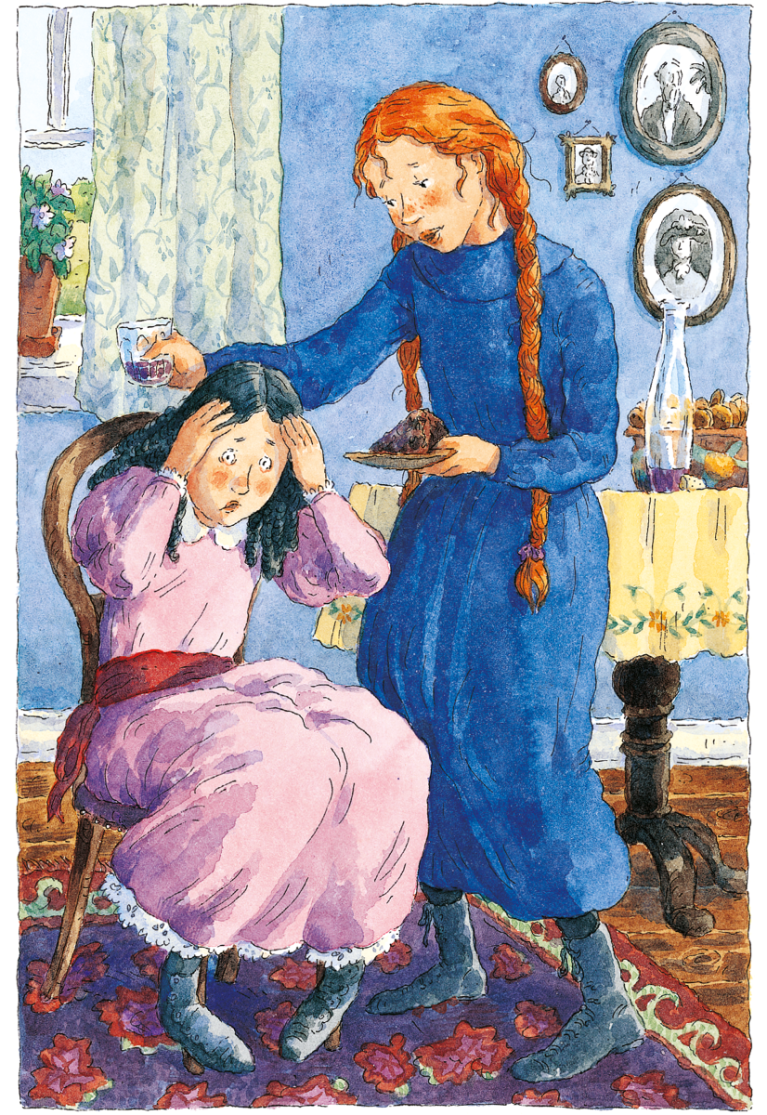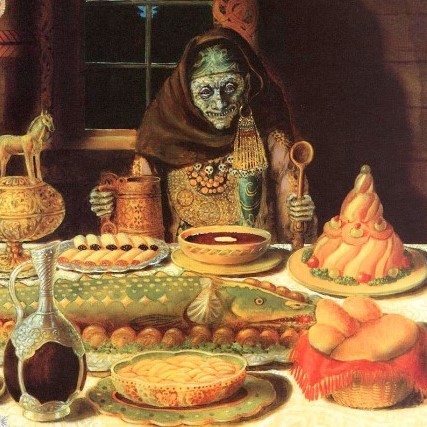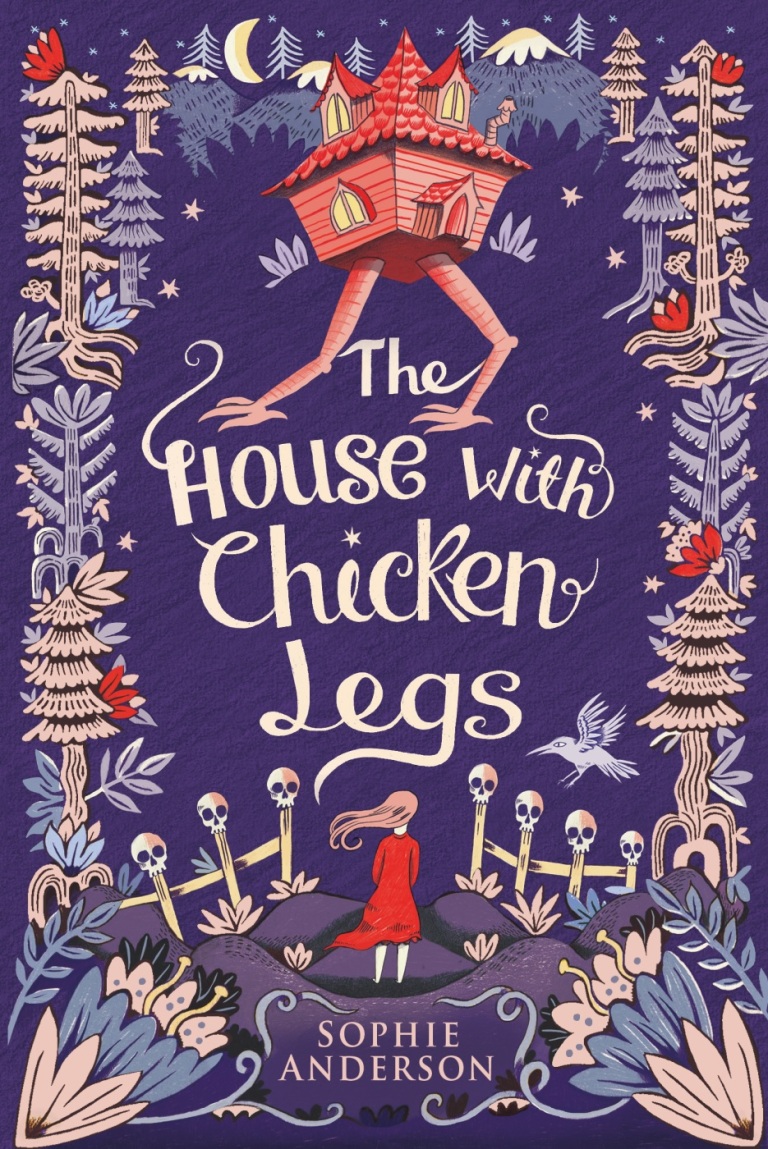You know you’re in for a treat when a book comes with a glossary that consists almost entirely of new and delicious sounding food. In the House With Chicken Legs, Sophie Anderson offers up many delights
Beghrir: ‘a spongy pancake soaked in honey’,
Chak-chak: ‘deep fried balls of dough, drenched in honey and left to harden’
Trost: ‘the fiery drink for the dead, named trast after a walking stick, because it helps them on their journey.’

All are created in a poultry themed house by the witch Baba Yaga to send the dead on their way to the afterlife. You might know her as the wicked old hag of numerous fairy tales who flies around on an iron pestle wielding her deadly mortar.

She is more likely to cook you for dinner than serve you up a feast.
‘In some of the old folk tales Baba Yaga is depicted as a cannibal, with a long nose for smelling out human blood and iron teeth for biting through flesh and bones!’

Sophie Anderson was keen to show a kind and compassionate side to Baba Yaga based on memories of her own Slavic grandmother.
‘The food and parties for the dead in The House with Chicken Legs were inspired by my grandmother. Her home was always full of delicious Eastern European foods, beautiful music, memories of the dead, and the joy of living!’

The result is a delicious inversion of Hansel and Gretel with real food at its heart.
‘I experimented with Russian recipes, made my first borsch and ate my first horseradish,’
Her recipe for aromatic spiced honey bread can be found on her website, and the book has inspired others to create their own recipes, like this one for Marinka’s Shchi (a Russian cabbage soup) developed by the talented culinary reader, Galina Varese.
From Lewis Carroll’s transformative cakes to Katherine Rundell’s mangoes and milktarts, food has always been an important and enduring part of children’s literature and it’s something that Sophie Anderson really understands.
‘Descriptions of foods can be deliciously sensory and surprisingly emotive,’ Anderson says, ‘offering comfort (fresh cake and cocoa), excitement (fizzy lifting drinks and popping candy), or even disgust (snozcumbers and tarantula legs!). They can really set the mood for a scene and transport the reader’s heart, soul (and taste buds!) into a setting.’

So who, from the wold of children’s books, would Sophie Anderson invite to her dream dinner party, and what courses would they provide?
‘Anne Shirley with her Raspberry cordial.’

‘Moominmamma with her rhubarb and ginger jam.’

‘Baba Yaga with her freshly baked black bread.’

Forest Rogers
The follow up to the House with Chicken Legs is also inspired by Slavic folklore – specifically a tale called The Lime Tree or Why Bears’ Paws are Like Hands. Happily there are more memorable foody scenes planned for this Siberian set tale, including ‘a particularly unusual cod fishing scene involving a weasel, a fish owl, and a skull light …’ Intriguing.

The House With Chicken Legs is published by Usborne. Thanks to Galina Varese for the use of the photograph of Marinka’s Shchi.





Thank you for your kind mention of my recipe! I must cook chak-chak one day. When I was a child, one of my friends’ Grandma used to make delicious chak-chak. She was an elderly Tatar lady, who barely spoke any Russian; she was very kind and cooked delicious food.
I love food descriptions in books, hence my love of Inspector Montalbano series etc. Cheryl from Madhouse Family Reviews and I often bookmark food descriptions and recipes mentioned in books, then cook and blog about them.
LikeLike
A feast for all the senses! I like the rehabilitation of Baba Yaga, to counter all the negative stories, though I did enjoy Diana Wynne Jones’ take in Wilkin’s Tooth in which her reincarnation is particularly scary.
LikeLike
I do not see any attribution for the 10th picture on this page where Baba Yaga is holding Vasilisa’s braid. The artist is my friend, Forest Rogers.
LikeLike
Thank you, have amended. I seem to remember I struggled to find the artist for this one. Happy to have seen more of their work.
LikeLike